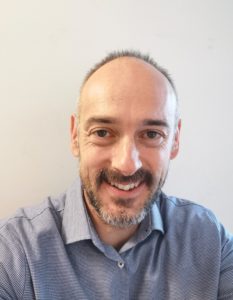
Geosynthetics education and adoption in central Europe is set to get a boost after the launch of the IGS’s newest chapter – IGS Slovenia.

The new chapter is headed by President Stanislav Lenart, with Vice-Presidents Professor Janko Logar from the University of Ljubljana and Jasmina Kink from privately-owned testing institute IGMAT d.d.
Mr Lenart, who works for the Slovenian National Building and Civil Engineering Institute, known as ZAG, explained the new chapter has been set up in association with the Slovenian Geotechnical Society to help pool resources.
“In this way, geosynthetic topics can be easily addressed directly to the most relevant audience and prevent overloading a small number of enthusiasts with administrative work,” he said.
IGS Slovenia does not include any corporate members as there is no significant geosynthetic manufacturer based in Slovenia. Therefore improving education and understanding on the range and application of geosynthetics is a key mission for the new chapter.
“The history of geosynthetics use in Slovenia is mainly related to trading companies, which import geosynthetic materials, and the level of knowledge on the use of geosynthetics is rather poor among domestic engineers. Thus, it is the ambition of the Slovenian chapter of the IGS to encourage young engineers to use geosynthetics and support experienced engineers on the proper use of geosynthetic materials,” said Mr. Lenart.
Mr Lenart is a Civil (Structural) Engineer and his PhD research was focused on soil dynamics. He received his PhD from the University of Ljubljana in 2006 and got involved in quality control works at large infrastructure projects, particularly railways, highways and hydrotechnical works.
“That is where I introduced myself to the use of geosynthetics, testing of their properties and where I have also seen many instances of them being used inappropriately!” he said.
In 2010, the Japan Society for the Promotion of Science awarded Mr Lenart a postdoctoral fellowship to research geosynthetic-reinforced soil in the laboratory of Professor Junichi Koseki at Tokyo University, which deepened Mr Lenart’s involvement in the geosynthetics community.
Mr Lenart said the Board’s priorities will begin with raising awareness of the new chapter through workshops promoting various types of geosynthetics and their proper use, and translating a range of IGS educational materials. More long-term the chapter wants to introduce and integrate geosynthetic courses in university study programmes, as well as support the continued education of geotechnical engineers on these subjects.
The creation of IGS Slovenia follows the recent launch of IGS Nordics last fall and the ongoing development of IGS Guatemala and IGS Bolivia. This means the IGS has nearly 50 chapters covering as many countries around the world.
Members can get in touch with IGS Slovenia via its web page, or via the Slovenian Geotechnical Society website.






















